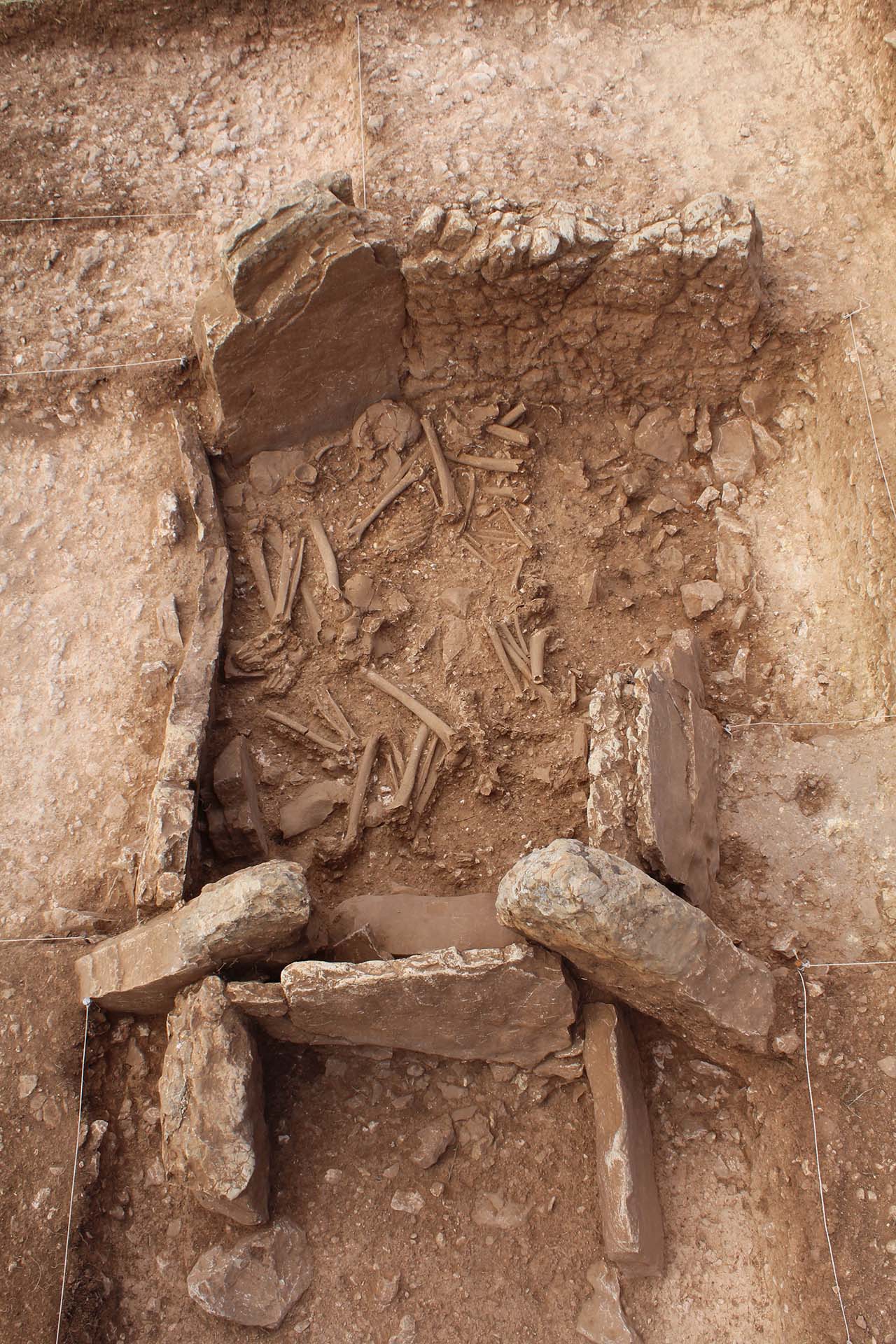News
24.09.2024
Twice as many women as men were buried in the megalithic necropolis of Panoria according to a multidisciplinary study
Multidisciplinary study uncovers gender bias at the megalithic necropolis of Panoria where twice as many women were buried
A multidisciplinary research team led by the Archaeometry research group of the University of Tübingen and the GEA research group of the University of Granada made a surprising discovery in the megalithic necropolis of Panoría (Granada, Spain): twice as many women as men were buried, a bias that is even more pronounced among the juvenile population, where the ratio is 10 females for every male.
The necropolis of Panoría is located at the easternmost end of Sierra Harana, in the town of Darro (Granada). It consists of at least 19 graves, 9 of which have been excavated between 2015 and 2019. They are collective burials from which more than 55,000 human skeletal remains were recovered. The dating of these remains shows that the first burials took place 5600 years ago with a discontinuous funerary use until 4100 years ago.
In a recent study published in the prestigious journal Scientific Reports, the use of new bioarchaeological methods has allowed the identification of chromosomal sex from the study of DNA and the analysis of a protein known as Amelogenin present in the tooth enamel. In this way, it has been possible, for the first time, to obtain a precise demographic profile of the biological sex of the people who were buried in these megalithic monuments. Surprisingly, the result is a clear bias in favour of female burials, twice that of male burials, a bias that is even more pronounced among juvenile individuals with a ratio of 10 females for every male individual. This ratio is far from the usual composition of human populations, which is approximately one to one. Only in exceptional circumstances, e.g. conflicts, wars or intense migration processes, does this ratio break down in favour of one of the sexes.
What circumstances could have led to such a pronounced bias in the population buried at Panoría? The bias in favour of female burials appears in all the analysed graves, in all age groups and throughout the time of use of the necropolis. This allows us to confirm that this was a very persistent and determining social decision over time affecting the different social groups buried within the graves. Therefore, extraordinary or unpredictable events can been ruled out as the cause of the bias found in Panoría.
If sex bias was a social decision, but what are the reasons for this over-representation of women in funerary rituals? Considering that biological kinship relations are the main criterion to be buried in the different structures, the over-representation of female individuals could indicate funerary practices based primarily on matrilineal descent. This means that family relationships and social belonging are established through the maternal line. This would explain the bias in favour of women and the absence of young male individuals who could have joined other kin groups, a common practice known in anthropology as male exogamy. In any case, the over-representation of women would indicate a female-centred social structure, in which gender would have influenced funerary rituals and cultural traditions.
Source: https://www.nature.com/articles/s41598-024-72148-x
Contact:
Dr. Marta Díaz-Zorita Bonilla
Archaeometry Research Group
Institute for Pre- and Protohistory and Medieval Archaeology
Eberhard Karls Universität Tübingen
Hölderlinstr. 12
D-72074 Tübingen, Germany
Email: marta.diaz-zorita-bonillaspam prevention@uni-tuebingen.de
Phone: +4970712974687

